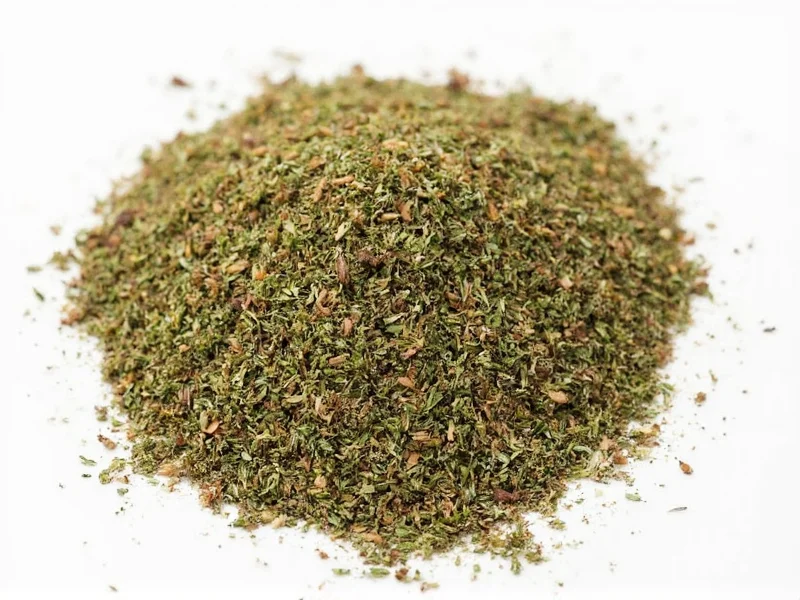Many home cooks mistakenly treat these herbs as interchangeable, but their botanical and flavor differences significantly impact dish outcomes. This comprehensive guide explores the critical distinctions between Mexican oregano and regular oregano to help you make informed culinary decisions.
Botanical Origins and Plant Characteristics
Mexican oregano belongs to the verbena family (Lippia graveolens), native to Mexico, Central America, and the southwestern United States. Despite its name, it shares no relation to true oregano. This perennial shrub features elongated leaves with a rough texture and produces small white flowers.
Regular oregano (Origanum vulgare), often called Mediterranean or Greek oregano, is part of the mint family. Native to Europe and Asia, this hardy perennial has small, oval leaves and purple or pink flowers. The most common culinary varieties include Greek oregano (Origanum vulgare subsp. hirtum) and Italian oregano (a hybrid of Origanum vulgare and Origanum vulgare subsp. gracile).
| Characteristic | Mexican Oregano | Regular Oregano |
|---|---|---|
| Botanical Family | Verbenaceae (Verbena) | Lamiaceae (Mint) |
| Scientific Name | Lippia graveolens | Origanum vulgare |
| Native Region | Mexico, Central America | Mediterranean, Central Asia |
| Leaf Texture | Rough, elongated | Smooth, oval |
| Primary Flavor Compounds | Thymol, carvacrol, eugenol | Carvacrol, thymol, gamma-terpinene |
Flavor Profile Comparison: Understanding the Taste Differences
The most crucial difference between Mexican oregano and regular oregano lies in their flavor chemistry. Mexican oregano contains higher concentrations of eugenol—the compound also found in cloves—which creates its distinctive citrusy, slightly medicinal profile with earthy undertones. When crushed between your fingers, it releases a bold, almost peppery aroma reminiscent of bold sage.
Regular oregano, particularly Mediterranean varieties, features a more balanced terpene profile dominated by carvacrol and thymol. This creates the familiar pungent, slightly bitter herbal flavor that's become synonymous with Italian and Greek cuisine. The flavor intensity varies by subspecies, with Greek oregano generally offering the strongest, most robust flavor preferred for Mediterranean dishes.
Understanding these flavor differences between Mexican oregano and regular oregano explains why substituting one for the other can dramatically alter a dish's character. Mexican oregano's citrus notes complement lime and chili in salsas and moles, while regular oregano's earthy bitterness balances tomato acidity in pizza sauce.
Culinary Applications: When to Use Each Variety
Mexican oregano shines in traditional Latin American cuisine where its bold flavor holds up to long cooking times. It's essential in authentic:
- Mexican mole sauces
- Bean dishes and chili recipes
- Salsas and pico de gallo
- Carne asada marinades
- Traditional Mexican rice dishes
Regular oregano (particularly Greek and Italian varieties) performs best in Mediterranean applications:
- Tomato-based pasta sauces
- Pizza toppings
- Greek salads and dressings
- Roasted vegetable preparations
- Marinades for lamb and chicken
Practical Substitution Guide for Home Cooks
While not ideal, substitutions between Mexican oregano and regular oregano become necessary when one variety is unavailable. Consider these guidelines when substituting Mexican oregano for regular oregano or vice versa:
When replacing Mexican oregano with regular oregano, use ⅔ the amount called for and add a pinch of ground cumin or a few drops of orange zest to approximate the citrus notes. This works best in cooked dishes where flavors meld during preparation.
When substituting regular oregano for Mexican oregano, increase the amount by 25% and consider adding a small amount of marjoram (which shares some flavor compounds with Mexican oregano) to enhance earthiness. This substitution works better in fresh applications like salsas than in long-simmered dishes.
For authentic Mexican cooking, seek Mexican oregano specifically—many Latin markets and online spice retailers carry it. Proper storage in an airtight container away from light preserves potency for up to 18 months, though freshly ground from whole leaves delivers optimal flavor.
Identifying Quality Mexican Oregano vs Regular Oregano
When purchasing either variety, look for these quality indicators to ensure you're getting authentic product:
- Color: Mexican oregano should be vibrant green to olive green; regular oregano ranges from bright to deep green
- Aroma: Mexican oregano emits strong citrus-earthy scent; regular oregano has more herbal, slightly floral aroma
- Texture: Mexican oregano leaves feel rougher and more substantial; regular oregano leaves are thinner and more delicate
- Stem content: High-quality products contain minimal stems—less than 10% by volume
Be wary of products labeled simply as "oregano" without specifying the variety, as this often indicates lower quality blends. Understanding the difference between Mexican oregano and regular oregano at the point of purchase prevents disappointment in your cooking results.











 浙公网安备
33010002000092号
浙公网安备
33010002000092号 浙B2-20120091-4
浙B2-20120091-4